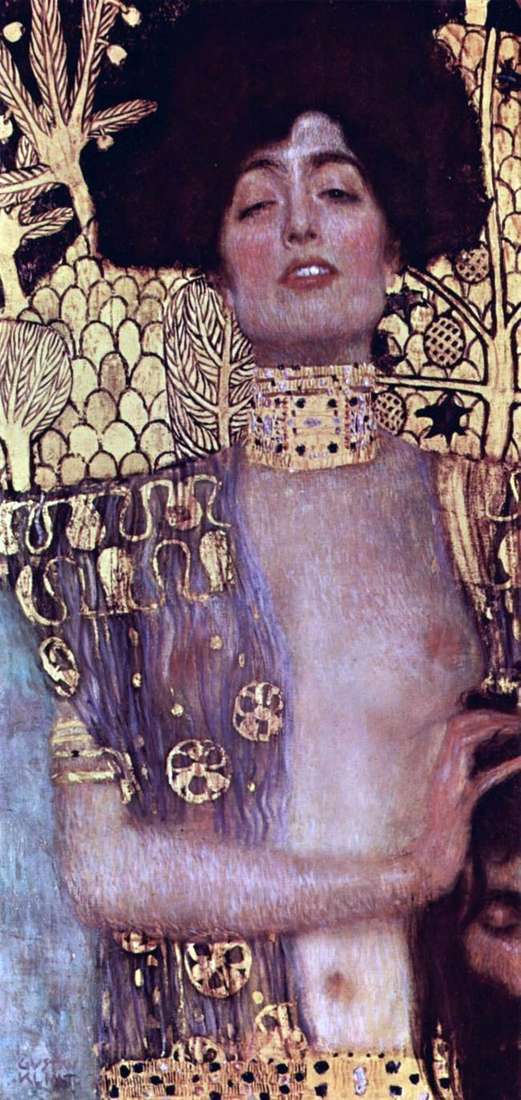
Judith is a woman who saved the family of Jews from enemies. Her homeland was captured by the Assyrians. To save her, she had to risk her life, she changed her clothes and sneaked into the enemy camp. She was very handsome, and the commander of her enemies could not resist her beauty.
In the evenings in his wards he got drunk and enjoyed this beautiful maid. On one such evening, when he fell asleep, Judith cut off his head and proudly returned to his people to declare victory. Many painters were inspired by this story. One of them was Gustav Klimt. He portrayed his performance of this fatal woman.
He represented Judith as a passionate woman. In the picture she emerges from the tent of her enemy. She had not yet managed to get dressed after a night with the commander, we can judge this by the robe that remained open and exposed her breasts. The severed head does not immediately attract attention. The artist tried to show all the pride that Judith feels, in her arrogant gaze. She feels like a hero and a winner, even though her enemy was very drunk and simply could not resist her. Even despite its act, the heroine is still a weak, refined, but very desperate girl.
“Judith and the head of Holofernes” was written by Gustav Klimt in 1901. Klimt created this picture in that period of his work, when the society was often shocked by his scandalous works. The wife of a famous Viennese banker posed for her. They worked on the painting for several years, then they got married. The world was presented with a very contradictory work of art. On the one hand, we see a woman as a savior there, but many condemn her and blame her for anger in the entire male sex.
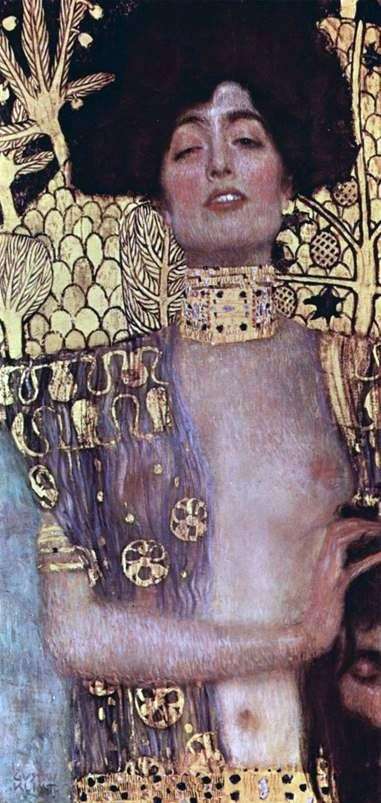 Judith y Holofernes Head – Gustav Klimt
Judith y Holofernes Head – Gustav Klimt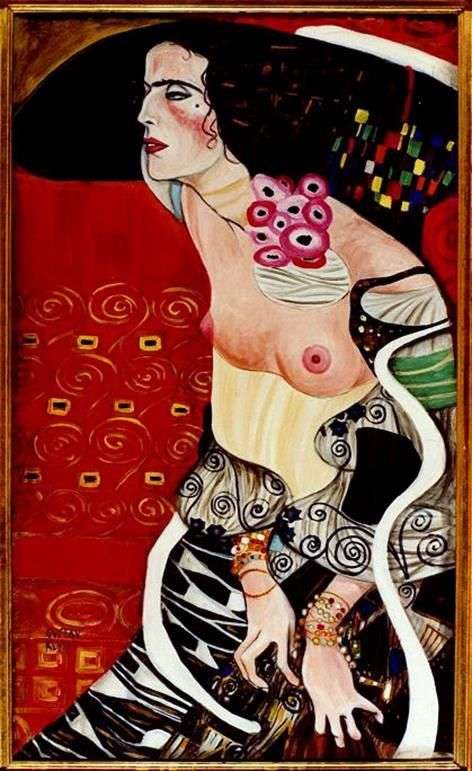 Judith II by Gustav Klimt
Judith II by Gustav Klimt Judith Beheading Holofernes by Caravaggio
Judith Beheading Holofernes by Caravaggio Judith, killing Holofernes by Michelangelo Merisi da Caravaggio
Judith, killing Holofernes by Michelangelo Merisi da Caravaggio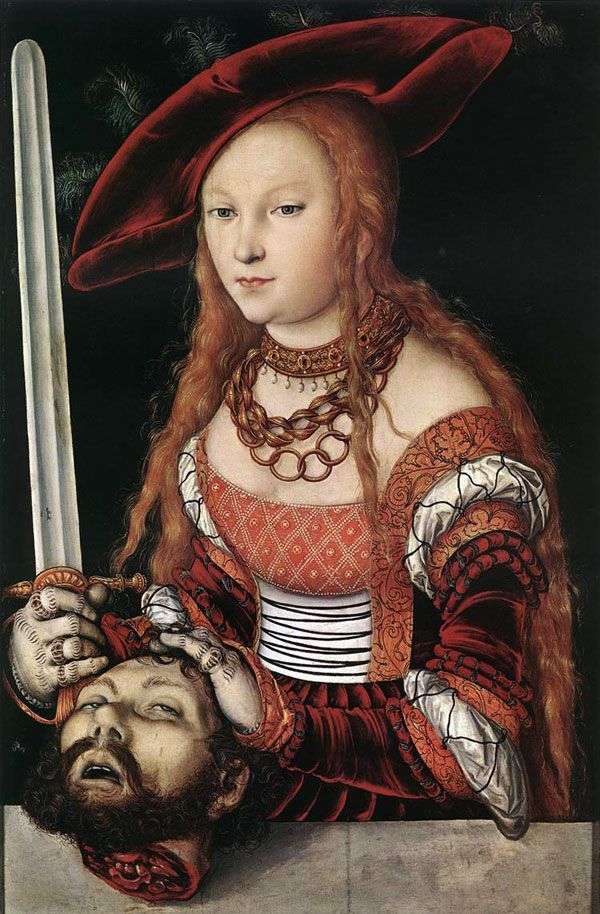 Judith with the head of Holofernes by Lucas Cranach
Judith with the head of Holofernes by Lucas Cranach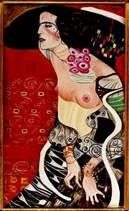 Judith II – Gustav Klimt
Judith II – Gustav Klimt Judith with the head of Holofernes by Cristofano Allori
Judith with the head of Holofernes by Cristofano Allori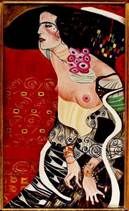 Judith II – Gustav Klimt
Judith II – Gustav Klimt